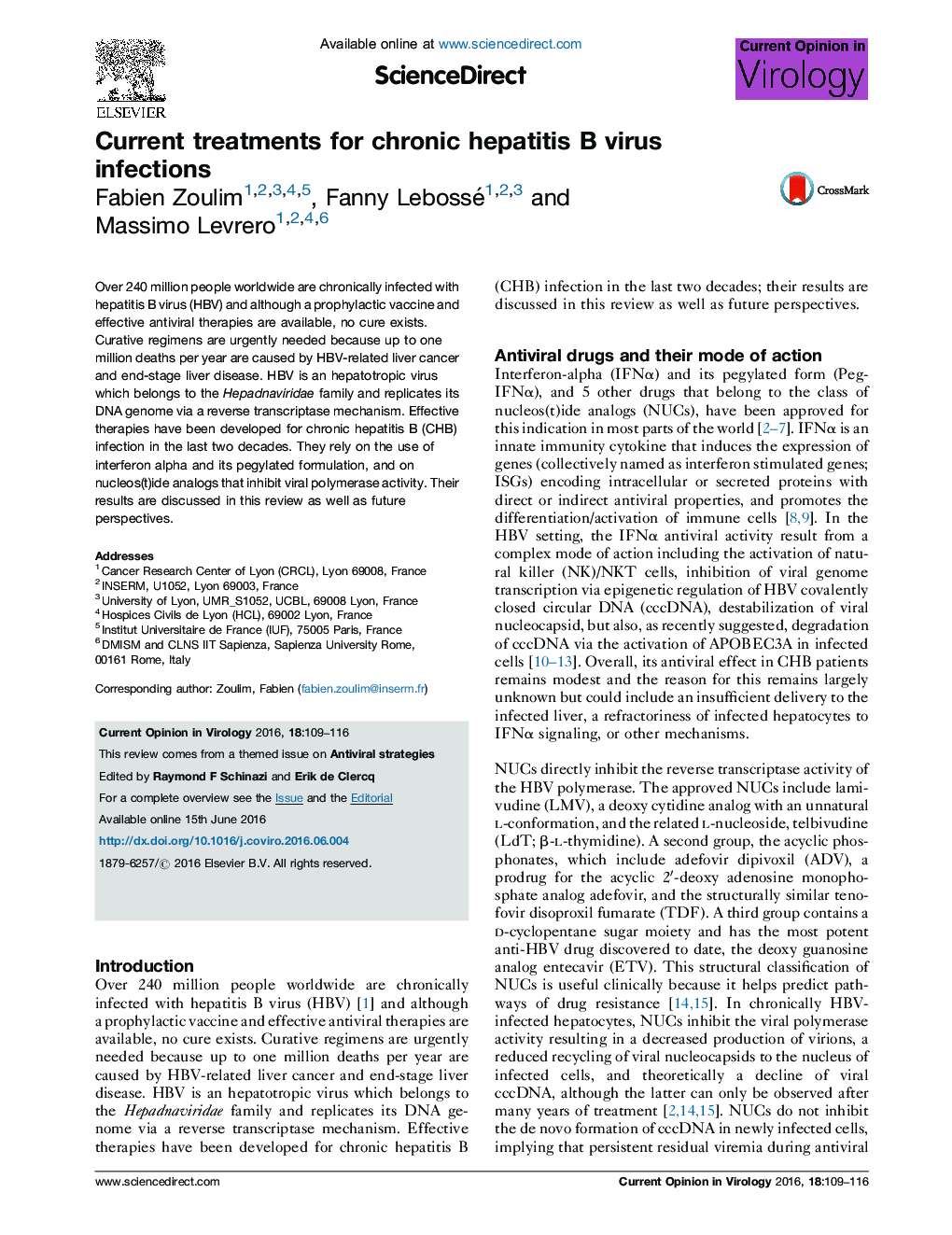| Article ID | Journal | Published Year | Pages | File Type |
|---|---|---|---|---|
| 5806560 | Current Opinion in Virology | 2016 | 8 Pages |
â¢Chronic hepatitis therapy currently relies on the use of Peg-IFNα, and NUC that inhibit viral polymerase activity.â¢Peg-IFNα induces viral load suppression that is sustainable after treatment cessation in 20% of patients.â¢NUC administration leads to viral load suppression in the majority of patients.â¢Long-term treatment is needed to avoid viral replication because of the persistence of viral cccDNA in the liver.â¢Viral load suppression is associated with a decreased risk of progression of liver disease and hepatocellular carcinoma, but the later is not fully eliminated.â¢A functional cure of infection, that is, HBsAg seroconversion, is achieved in 10% of treated patients. Combination of pegIFN and NUC may provide higher rates of HBs seroconversion in some patient populations.
Over 240 million people worldwide are chronically infected with hepatitis B virus (HBV) and although a prophylactic vaccine and effective antiviral therapies are available, no cure exists. Curative regimens are urgently needed because up to one million deaths per year are caused by HBV-related liver cancer and end-stage liver disease. HBV is an hepatotropic virus which belongs to the Hepadnaviridae family and replicates its DNA genome via a reverse transcriptase mechanism. Effective therapies have been developed for chronic hepatitis B (CHB) infection in the last two decades. They rely on the use of interferon alpha and its pegylated formulation, and on nucleos(t)ide analogs that inhibit viral polymerase activity. Their results are discussed in this review as well as future perspectives.
